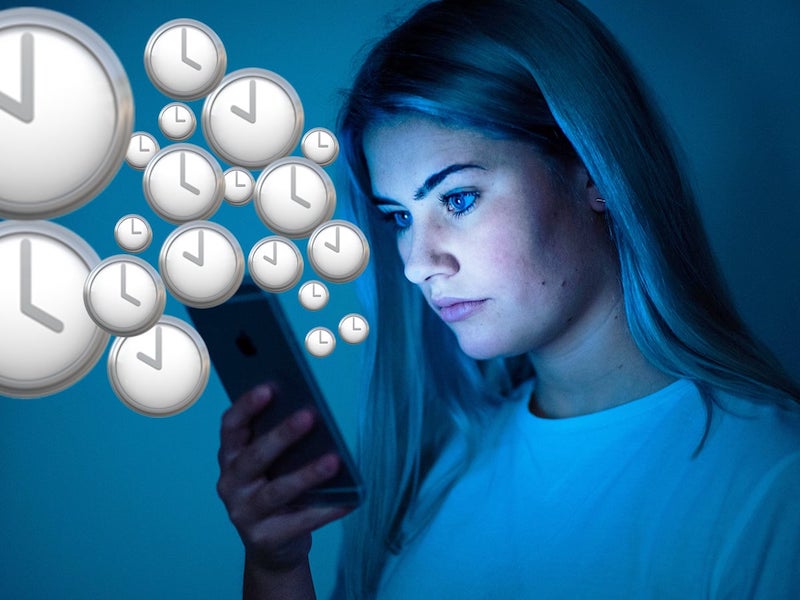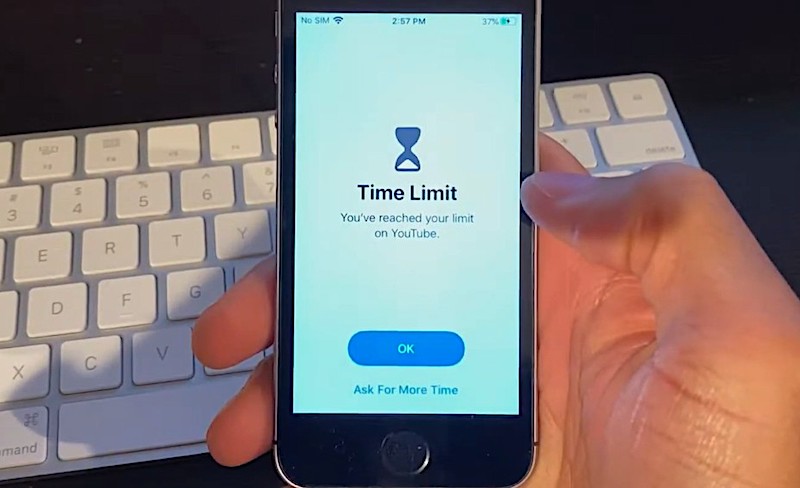16-30-year-olds spend an average of one day a week on their smartphone
Young Americans, Canadians, and French people spend on average more than 120 minutes a day on their devices. However, this is less than the world average for this generation.
People aged 16-30, known as “millennials” (those born around the year 2000), spend on average more than 120 minutes a day on their smartphone, or the equivalent of one day a week, reveals a study TNS Sofres.
Globally, this generation is still dependent on cell phones: these “millennials” spend an average of 3.2 hours a day in front of their device screen, especially watching videos (2 hours a day). acts of on-demand content or television programs on the Internet.

The traditional media – radio, television – are not for all that shunned by 16-30-year-olds, even if they use them less than previous generations, notes the study. Globally, they watch television about 1.3 hours per day compared to 2.3 hours for 46-65-year-olds. A large majority (63%) connect to social networks daily and more than half (59%) use their gadgets to watch videos.
A quarter of 46-65-year-olds on Facebook every day
As for older Internet users (46-65 years old), they spend an average of an hour and a half per day on their smartphone, less intensive use than that of 16-30 year-olds but more and more regular, further notes the study. Almost a quarter of them (24%) use Facebook on a daily basis. Their traditional media consumption habits, however, remain strongly anchored with 3.1 hours per day devoted to watching television, reading the press, or listening to the radio, which is almost 60 minutes and a half more than “millennials”.
Americans dedicate an average of two hours a day to their smartphone, reveals a study by the American firm App Annie. This is much less than the young people, who devote almost 4 hours to it.

Unsurprisingly, Americans are spending more and more time with their eyes riveted on their gadget’s screens, especially when they are young. A study by the American firm App Annie on the use of smartphones around the world in 2020 reveals interesting data. The Young Americans spent hours a day on their devices in 2020, up from 1.8 hours two years earlier, an increase of 27%. This is less than the world average of 3.7 hours per day.
In half of the cases, this time is spent on social networks. This is surprisingly less than in previous years, due to the boom in the “video and entertainment” category. In 2015, the French (Android data only) spent 60% more time-consuming YouTube or Netflix videos, for example, than in 2017. The American video-on-demand service is also the first application of streaming in France.
The use of smartphones for online shopping has also become more democratic. Globally (excluding China), users spent 2.5 billion hours on their screens during the Black Friday period.
Almost four hours a day for young people
The young generation is the most connected because they are also the best equipped. According to App Annie, 98% of “Generation Z” people (born between 1997 and 2012) say they own a smartphone. Young people spent an average of 3.8 hours consulting some of the 25 most popular applications, excluding video games. But the most impressive figure is the number of connections. On these same applications, they are connected on average 150 times, each month.
Google recently announced a dashboard, built into Android P, that will show the user how much time they are spending on their phone. In June, Apple is expected to announce the same feature. Google calls it “digital wellbeing”, or digital well-being, and this is likely to be one of the major challenges of the next few years. But until then, do you know how many times a day do you pick up your smartphone? How much time do you spend on your favorite app? Two applications can help you see more clearly while waiting for solutions from Google and Apple. And the answers may surprise you.
We use our smartphones more often than we think. According to a comScore survey, conducted in 2017 in the United States, an American over the age of 18 spends an average of 2.51 hours a day on their phone. That is almost 86 hours per month. In Europe, the numbers are lower but just as impressive: 66 hours on average in the UK, 57 hours in Italy, and 52 hours in Spain.
Users also vary with age. In Europe, 16-24-year-olds spend an average of 168 minutes per day on their smartphone. 35-44-year-olds use their phones for 78 minutes. Finally, 55-64-year-olds spend “only” 30 minutes a day. Obviously, not all of these statistics tell you exactly what your personal consumption is: how much time you spend on Facebook, or how often you glance at your smartphone in a day.

This is where two very practical applications come into play, and which allow you to wait before the arrival of Android P and iOS 12: QualityTime and Moment. The first is available on Android, the second on iOS. But the two applications are similar in the features offered. Once installed, you just have to leave them running in the background to get some amazing statistics afterward.
The applications monitor the time spent on your smartphone, but also on each application. With the help of graphs, you can follow your consumption and understand how you use your smartphone (in the morning, in the evening before going to sleep, in public transport, etc.).
As for the more addicted among you, there are ways to limit your use. Both apps let you set a time limit, or activate notifications that remind you to take a little break. Obviously, it will take some willpower to follow the advice of these two apps to the letter, but it’s a good start.
Both apps are free but offer some paid premium features. As for Android P, the public version will be available this summer.






